Physical Address
304 North Cardinal St.
Dorchester Center, MA 02124
There is a wide range of supgraglottic airways (SGAs), and expertise with several devices is necessary to provide optimal airway management to patients in a wide range of settings.
Although there is an expanding range of indications for use of SGAs, the safety profile for many of them remains undefined. Each practitioner must master the basic skills for optimal use before attempting more advanced techniques. Exercising careful judgment in assessing the suitability of an SGA for a specific patient and clinical environment is also critical.
Practitioners must understand the advantages and disadvantages of using SGAs. Although the current limitations of SGA research are known, the importance of using an evidence-based approach to select one device over another remains essential.
Second-generation SGAs have some proven advantages and other potential advantages over first-generation devices.
SGAs are not intended to replace all functions of the endotracheal tube (ETT) and are primarily suited for use in fasted patients undergoing surgical procedures when there is no specific indication for tracheal intubation.
Although anesthesiologists are the predominant users of SGAs, use by clinicians with limited anesthetic experience is also indicated for rescue indications, such as cardiopulmonary resuscitation.
SGAs can be safely used for controlled ventilation in appropriately selected patients and surgical situations, when the correct device is used correctly.
The risk of aspiration with SGAs is low in expert hands, which is achieved primarily by careful and appropriate case selection, expert insertion, and meticulous management of the airway after insertion.
SGA function is dependent both on its design and correct use. Care and vigilance are required by the user from the point of insertion to removal, with appropriate maintenance of cuff pressures and depth of anesthesia in between. All airway devices can fail or cause complications, thus being vigilant and prepared for these uncommon events will minimize the risk of patient harm.
Clinical research is unlikely to ever prove which SGA is safest. Nonclinical information and research must be understood to form a balanced opinion. There remains some art in this science.
The classic laryngeal mask airway (cLMA) was developed by Archie Brain and introduced into clinical practice in 1988. In the first article on the cLMA, Brain described the device as “an alternative to either the endotracheal tube (ETT) or the face mask with either spontaneous or positive-pressure ventilation (PPV).” More than three decades later, the cLMA is recognized as one of the most important developments in airway management, becoming the most commonly used airway device for general anesthesia in many countries. Not only has the cLMA revolutionized anesthesia practice, it also continues to fuel ongoing advances in the technology and utility of supraglottic airway (SGA) device design and clinical use.
The cLMA and its variants (together known as LMAs) are the most frequently used and most extensively studied SGAs; however, SGAs with different designs and performance characteristics may provide adequate oxygenation and ventilation in circumstances where an LMA fails. The LMAs and other SGAs have constantly been developed or modified, generally resulting in many improved and safer tools for airway management. Conversely, some SGAs have been released and used in clinical practice and subsequently withdrawn from the market due to poor performance or low utilization.
Selection of an appropriate airway device across and within device subtypes is complex and informed by multiple factors specific to the patient, surgery, and practitioner. With no single ideal airway device, advanced and rescue airway management depends on a repertoire incorporating many airway devices, as recognized in the various international difficult airway algorithms. Although some may consider the cuffed ETT the gold standard in providing a secure airway, this should never be assumed to be true when used by someone with inadequate training and judgment to correctly place and remove an ETT. ETTs are typically used without incident; however, complications with their use can occur, ranging from trivial to life-threatening. The use of SGAs should not be considered any differently.
Second-generation SGAs developed in the last two decades have greatly enhanced the safety profile of these devices. For example, since 2015 all Difficult Airway Society (DAS) algorithms on management of the difficult airway have included the recommendation that second-generation SGA devices should be used in the setting of a failed tracheal intubation. Several other organizations are now also adopting this approach.
In this chapter, we outline the design, efficacy, and safety features of SGAs, highlighting fundamental skills required for optimal use and their limitations. A full review of the extensive body of literature and devices (particularly the various disposable laryngeal mask variants) is beyond the scope of this chapter. Rather, we explore current clinical controversies and provide a structure from which to rationalize the use of particular devices for an expanding range of advanced indications. LMA-type and non-LMA-type SGAs are discussed separately.
The concept of being supraglottic describes the fact that the ventilation orifice is just above the glottis, in contrast to pharyngeal airway devices, or infraglottic devices that deliver anesthetic gases or oxygen below the vocal cords (e.g., tracheal intubation, transtracheal jet ventilation, cricothyrotomy). Devices stemming from the development of the original cLMA have been variably described as supraglottic airways or devices (abbreviated to SADs or SGAs), extraglottic airways or devices (EADs or EGAs), or periglottic airways or devices.
In 2004, Brimacombe recommended using the term extraglottic to highlight that distal extension into the hypopharynx and upper esophagus, below the level of the glottis, is a fundamental safety feature of supraglottic devices. Although each of these variations is based on a sound rationale, for the purposes of simplification we have chosen to use the term because it is still the most commonly used in the literature. It is also noted that the acronym LMA (but not the term laryngeal mask airway ) is trademarked by the manufacturers of the cLMA (Teleflex North America and associated international companies) and should only be used to refer to laryngeal mask airways produced by this company. The acronym LM refers to a laryngeal mask manufactured by anyone other than the original manufacturers. Although LMs could superficially be considered LMA imitations, there are design and manufacturing differences among the many products that have been released and withdrawn from the market. Often there is little or no evidence to evaluate the effect of these differences on clinical performance, let alone to compare them with the original cLMA, for which there is a substantive body of performance data. , As such, discussion of specific LMs is beyond the scope of this chapter.
The classification of SGAs, both the LMA type and the non-LMA type, falls into two broad categories: those based on anatomic or mechanistic features and a pragmatic division into generations.
The most widely adopted classification was described by Cook in 2009, defining first-generation SGAs as “simple airway tubes” and second-generation SGAs as “those with design features that are intended to reduce the risk of pulmonary aspiration of gastric contents.”
The utility of this classification is its simplicity and focus on clinical safety, which is perhaps the reason that it has become widely adopted. Its limitations lie with the diversity that remains within each generation. It should also be highlighted that an intentional design does not indicate any substantiation of improved outcomes. As will be described later, the majority of published evidence on SGAs relates to efficacy, whereas clinical decision making most commonly focuses on safety. In reality, there is no robust evidence confirming that any SGA is safer than another, and in the absence of this robust evidence, use of “design intent” and “design features” focused on improving safety is a logical and pragmatic compromise ( Table 19.1 ).
| First-Generation SGAs | Second-Generation SGAs | |
|---|---|---|
| Based on the Classic LMA |
|
LMA Proseal, LMA Supreme, LMA Gastro, LMA protector, i-gel, Baska Mask |
| Based on the ETC - Shiley Esophageal Endotracheal Double Lumen | LT-D | LTS-D, Gastro LT |
| Based on the Flexible LMA | LMA Flexible, AES UltraFlex, Ambu AuraFlex, Solus Flexible | Ambu AuraGain, Ambu Aura-I |
| Based on the Intubating LMA | Fastrach ILMA, LMA Classic Excel, air-Q, air-Q disposable, air-Q SP, air-Q SP disposable | air-Q Blocker, Block Buster Intubating Laryngeal Mask Airway, Laryngeal Seal Pro |
| Other | SLIPA |
Controversially, the term third-generation SGA has been used in the literature. At present, the term is used without definition but often implies an improvement or superiority in a new device. The term third generation has been proposed to encompass so-called self-pressuring or self-energizing sealers or the additional features of a bite block and novel drain design in the Baska Mask. However, it should be noted that several established second-generation devices have such features, with no evidence that any device termed third-generation has benefits over existing SGAs; the Baska Mask was described as a third-generation device before the publication of any performance data.
Anatomic-mechanistic classifications have been recognized as useful for designers of SGAs and are helpful in educating users in the functional benefits and disadvantages of particular designs. However, it is uncertain if they have value to clinicians in their daily practice.
In 2004, Brimacombe proposed a classification based on the presence or absence of a cuff, the route of insertion (oral or nasal), and the anatomic location of the distal portion of the device. Four other potential criteria proposed for consideration included the anatomic location of the distal airway aperture, the ability to use the device for intubation, whether the device is disposable or reusable, and the anatomic location of the cuff if one is present. Although Brimacombe argued the importance of a cuff as a measure of suitability for controlled ventilation, the subsequent efficacy of cuffless designs (e.g., i-gel) has disproven this. The relevance of noting the distal tip location in relation to separation of the respiratory and gastrointestinal tracts is less relevant because most modern SGAs (with the notable exceptions of the Cobra PLA and Tulip) extend into the hypopharynx and upper esophagus. Additionally, tip location is only one element of protection from aspiration, as esophageal seal varies dramatically between SGAs in a cadaver model. In addition, the presence and size of any distal cuff and drain tube are important differentiating features.
Also, in 2004, Miller described an approach based on sealing mechanisms, including cuffed perilaryngeal sealers, cuffed pharyngeal sealers, and cuffless anatomically preshaped sealers, proposing further subdivision based on whether the device is single use or reusable and presence or absence of an esophageal cuff.
In 2014, Miller updated his classification with Michalek, dichotomizing devices into pharyngeal sealers or base of tongue sealers, further classifying “three generations” within each of these groups on the basis of the sealing mechanism used (inflatable, wedge, and self-energizing). Aside from the confusion caused from using the term generation, as discussed previously, the current value of a classification system that places the vast majority of devices in the inflatable seal category is yet to be determined.
A further classification used by Hernandez and colleagues in 2012 was also based on cuff design, including those with an inflatable periglottic cuff, no inflatable cuff, a single pharyngeal cuff, or two inflatable cuffs.
Currently, the classifications of SGAs used are potentially confusing and none is perfect. An international consensus classification of SGAs focused on functionality and safety would potentially be of benefit. However, this is currently limited by the paucity of evidence specifying the safety differences among devices and the difficulty in establishing such evidence.
Several national and international regulations govern the marketing of medical products. Regulations governing the introduction of new medical devices are much less onerous than those faced when developing and introducing a new drug, which include three phases of clinical trials and mandatory postmarketing surveillance. Rather, when a company obtains a license to market an SGA, it indicates that the manufacturer has assessed the product to be “fit for the purpose” for which it was intended. Although some companies perform extensive laboratory, model, and clinical evaluations before marketing, others invite a select group of hospitals or individuals to perform a trial of the device, and after each use they collect their informal assessment of performance. These practices are far from universal or regulated, and industry reports are not subject to the same rigor as clinical trials, with no requirement to assess clinical efficacy. These issues have long been recognized in the literature. , Regulatory changes have been proposed in the United Kingdom (UK); however, the DAS recognizes that the logistical and political complexities of engaging in this process make it unfeasible. Rather the DAS proposes that assessment of clinical efficacy should be put in the hands of clinicians by determining purchasing standards.
The development of SGA scoring systems is synergistic with the DAS strategy. Miller was the first to introduce the concept in 2004, using eight desirable objectives to guide device selection for routine use. Although Miller himself recognized the limited data available at this time to accurately inform this process, his work was relevant in highlighting the need for consistency in SGA evaluation. Cook and Kelly similarly used a scoring system to assess seven performance features of SGAs in four clinical situations (routine use, use by a novice at a cardiac arrest, airway rescue by an expert after failed intubation during a rapid sequence induction, and intubation through an SGA after failed intubation), as informed by their knowledge of the literature, judgment, and clinical experience. This summative assessment provided a structure to compare and rationalize the use of six SGAs. However, even 10 years after Miller’s efforts, limitations in the current literature base are still open to contrasting interpretations. While recognizing this, the importance of an evidence-based approach to SGA use remains.
This raises important philosophical questions highly relevant to modern medical practice, regarding the minimum level of evidence needed to make a pragmatic decision about the purchase or selection of an airway device. Although a well-designed large double-blind multicenter study provides the most robust assessment of relative efficacy, the associated time, resource, and financial costs may mean it is not always appropriate or possible. Such trials may also establish relative efficacy without determining relative safety, particularly for uncommon events. The difference between optimal and satisfactory evidence, while balancing the demands of what is meaningful as opposed to achievable, needs to be considered. The Airway Device Evaluation Project Team (ADEPT) guidelines, produced by the DAS in 2011, argue that a single case-control or historical-control trial is an acceptable minimum standard, while recognizing that it is under the purview of the individual clinician or group to judge if that is “sufficient” for the unique situation being assessed.
While recognizing the limitations and controversies, adoption of the ADEPT guidelines will help to create an infrastructure and motivation to obtain the required evidence, serving to evolve the science and practice of airway device evaluation. This has already been recognized on a national level through guideline development done by the Association of Anaesthetists of Great Britain and Ireland (AAGBI) and the Australian and New Zealand College of Anaesthetists (ANZCA). ,
As characterized by the prototype LMA, SGAs are minimally invasive and designed to manage the airway of an unconscious patient. An inflatable mask is fitted with a tube that exits the mouth to enable ventilation of the lungs. The mask fits against the periglottic tissues, occupying the hypopharyngeal space and upper esophagus, forming a seal above the glottis rather than within the trachea ( Fig. 19.1 ). Placement is intended to be a less traumatic alternative to tracheal intubation, although more reliable and hands off than face mask ventilation. In the development of the cLMA, Brain soon realized that despite a range of sizes, one model could not fulfill all clinical needs. Following the cLMA, Brain and the companies he worked with introduced several additional models: LMA Flexible (fLMA), for head and neck anesthesia ( Fig. 19.2 ); LMA Unique (uLMA), a single-use version of the cLMA; Intubating Laryngeal Mask Airway (ILMA, Fastrach), to facilitate blind and flexible scope intubation ( Fig. 19.3 ); LMA Classic-Excel, a cLMA-like device with features to facilitate use of a flexible intubation scope (FIS), released in North America only; ProSeal LMA (PLMA), the first second-generation LMA, with enhanced features to improve efficacy during controlled ventilation and reduce the risk of aspiration ( Fig. 19.4 ); LMA Supreme (SLMA), a single-use second-generation device with features of the uLMA, PLMA, and ILMA ( Fig. 19.5 ); and LMA Protector, a silicone second-generation device dual gastric drainage channels, released in 2016. ( Fig. 19.6 ). The LMA Gastro, released in 2017, is a second-generation SGA specifically designed for upper gastrointestinal procedures ( Fig. 19.7 ). The step changes in design are the fLMA, ILMA, and PLMA, and these are the focus of this chapter with the cLMA.
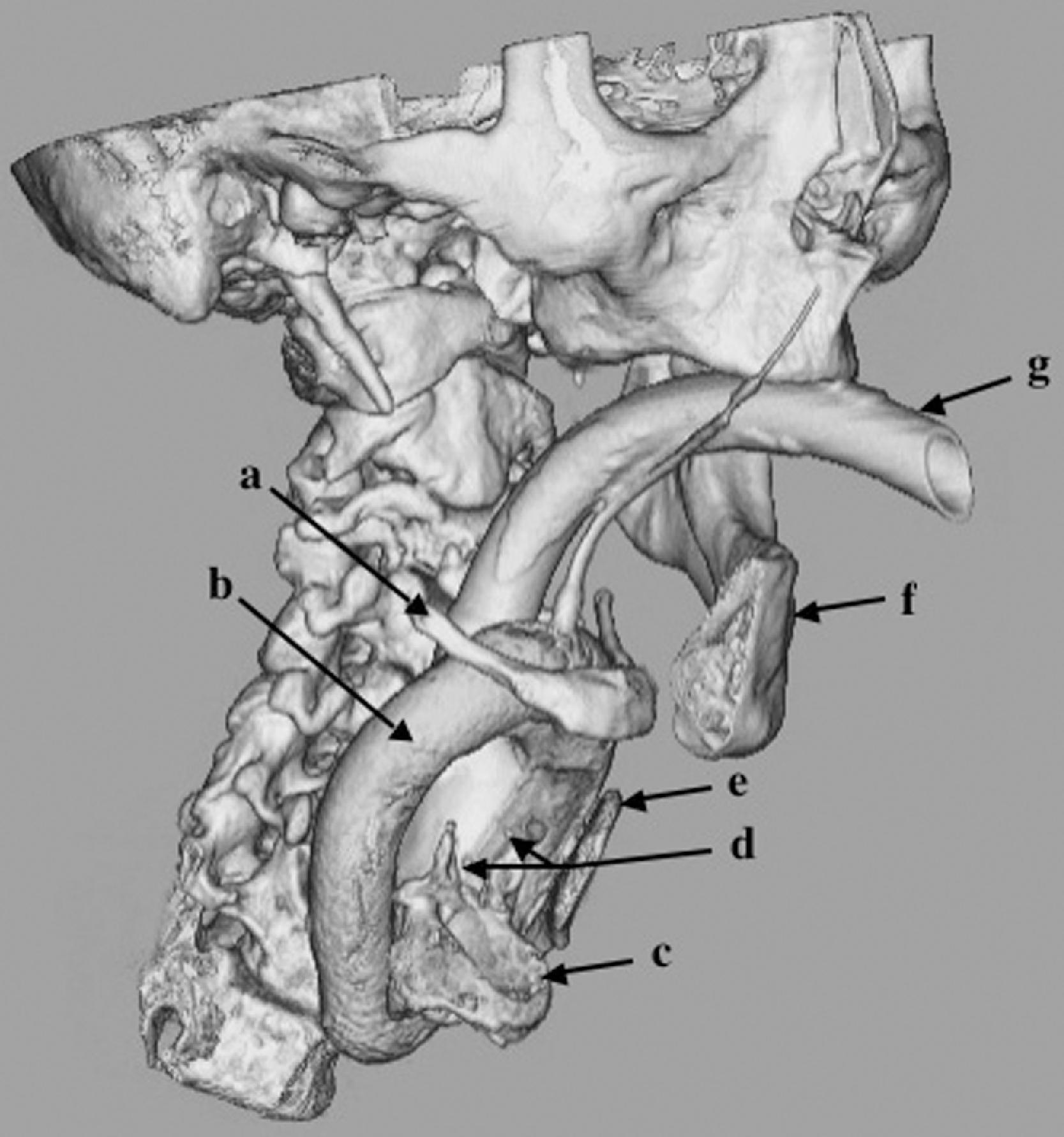
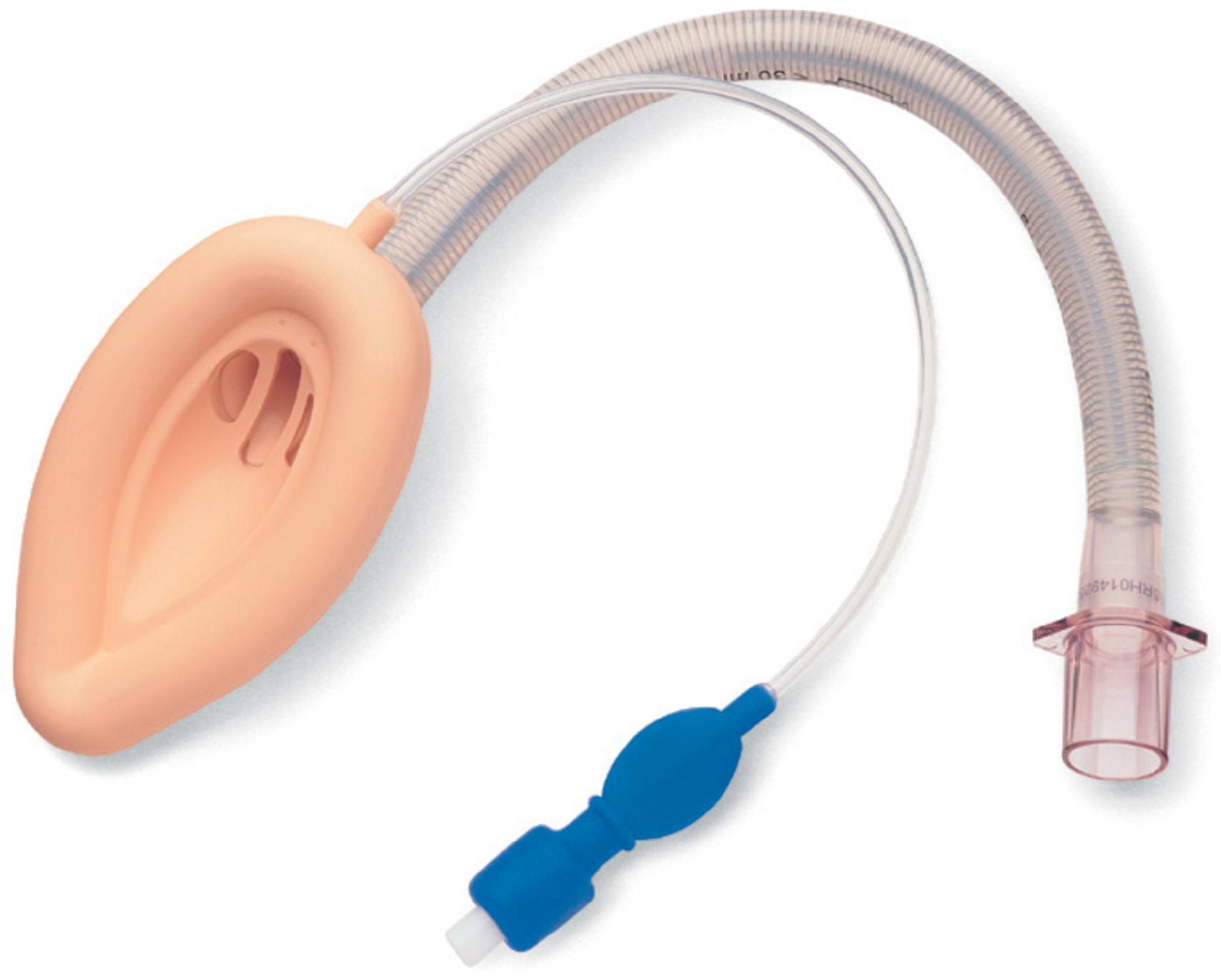
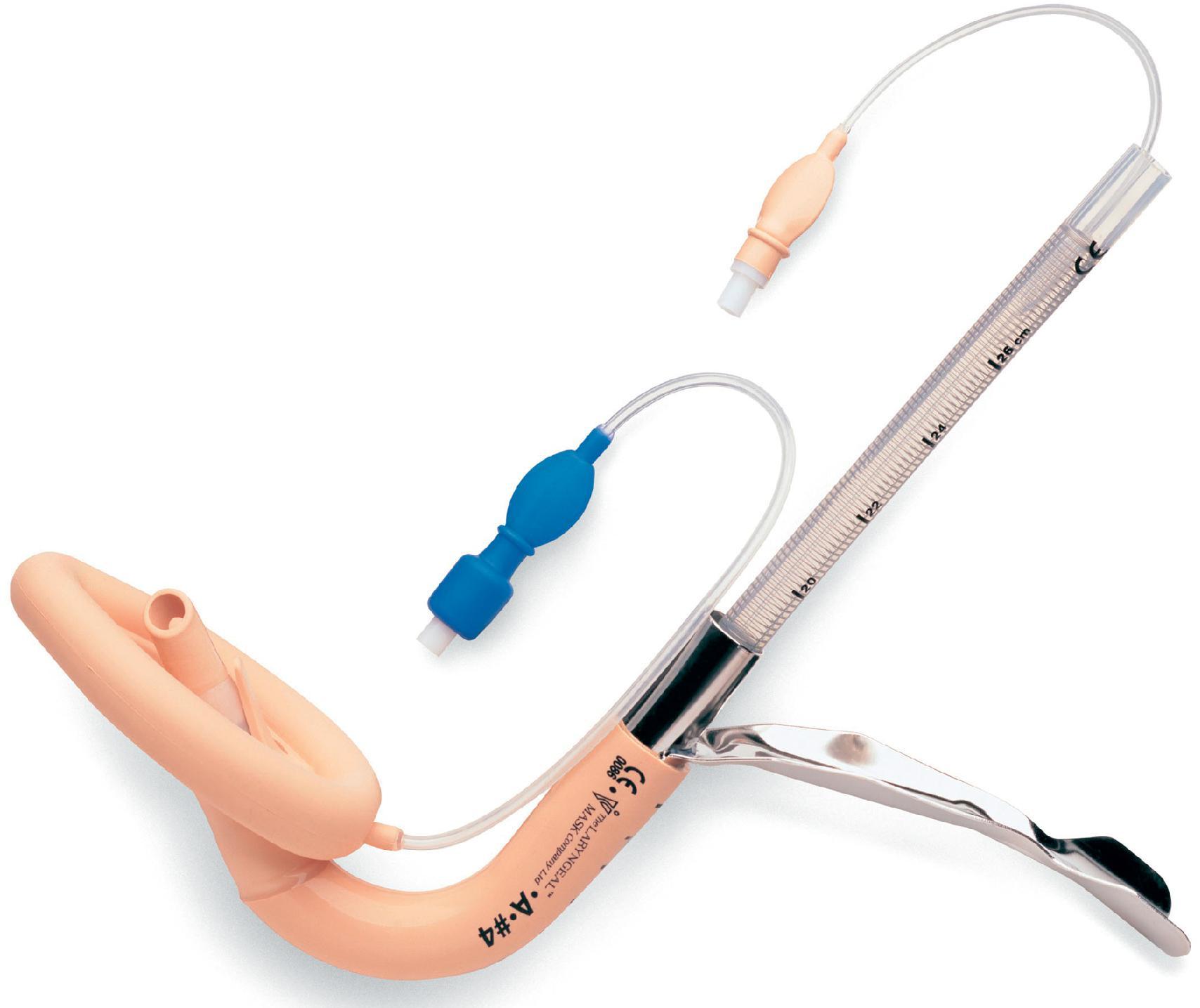
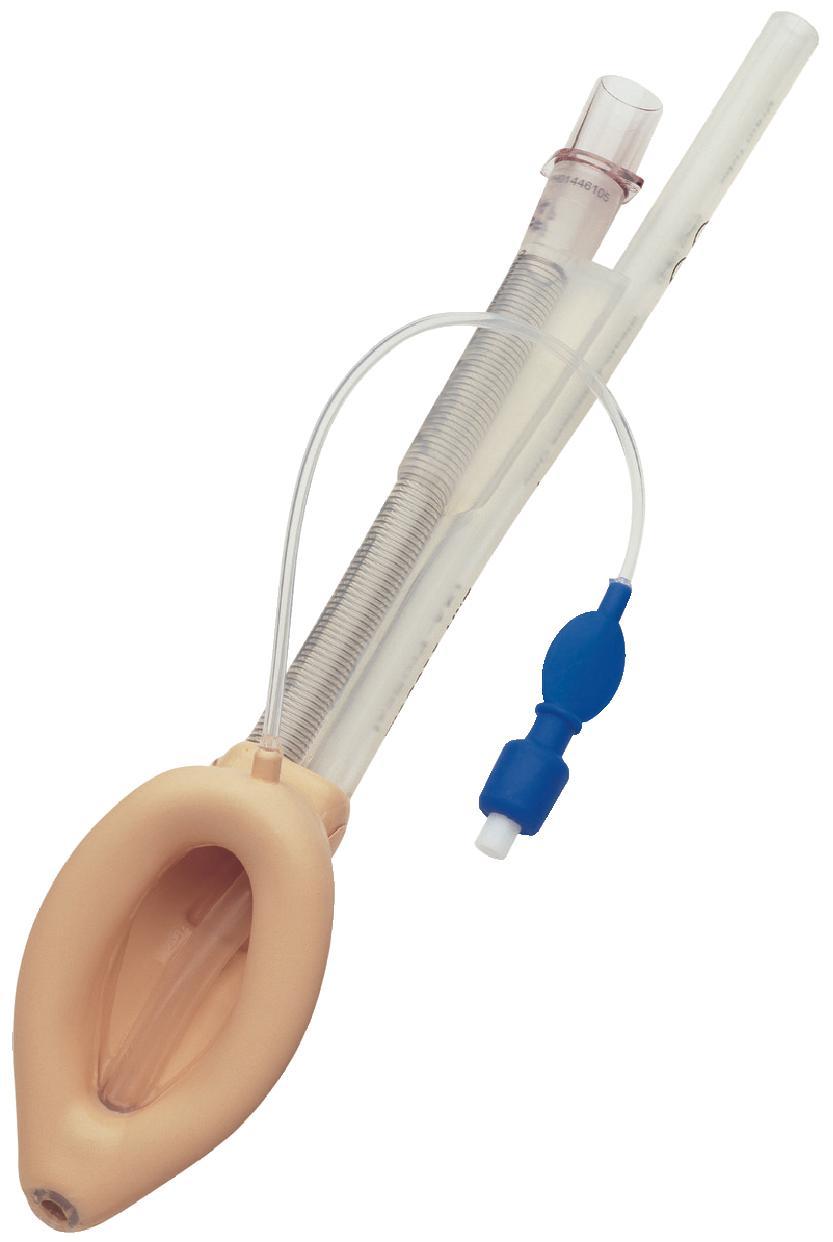
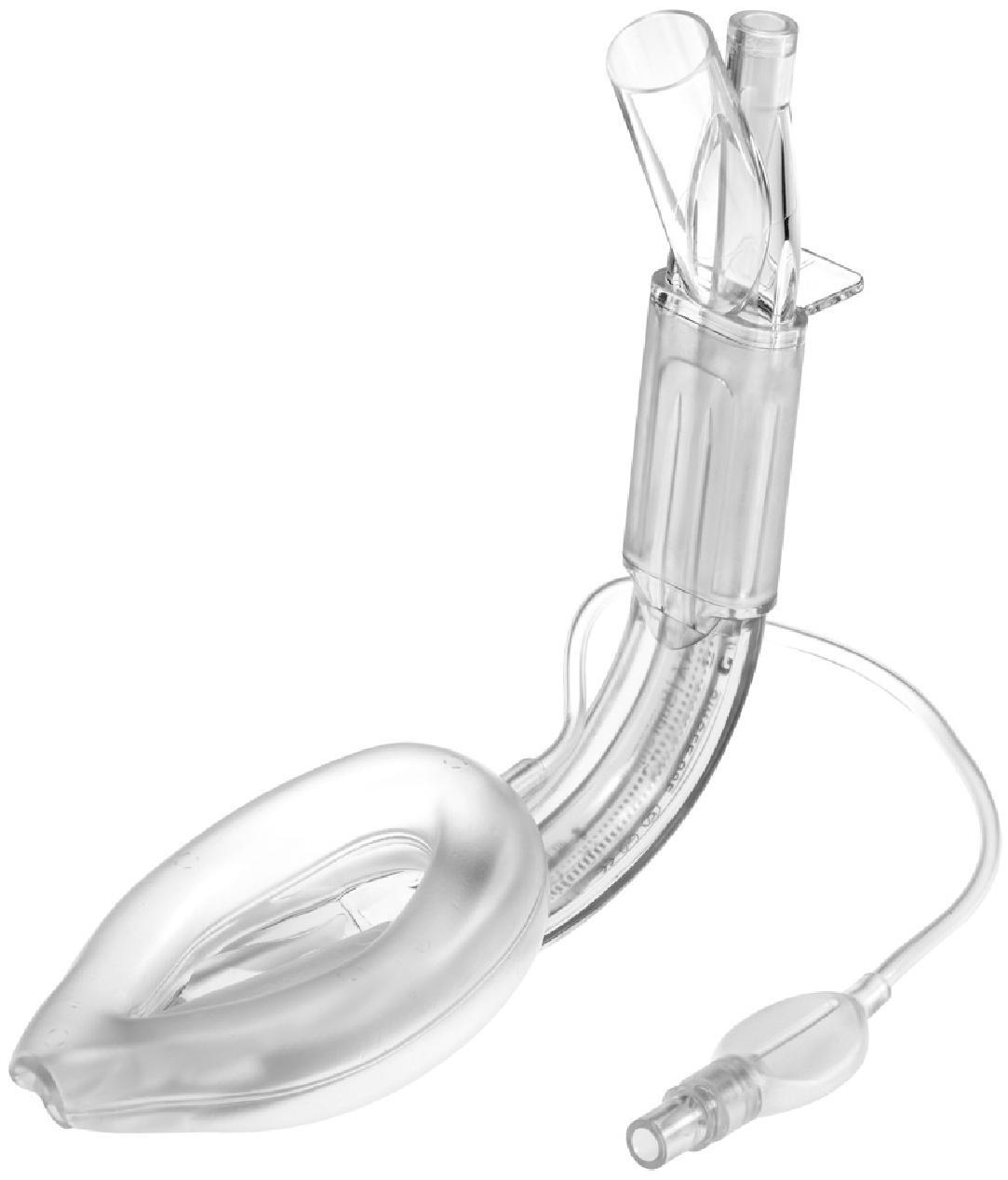
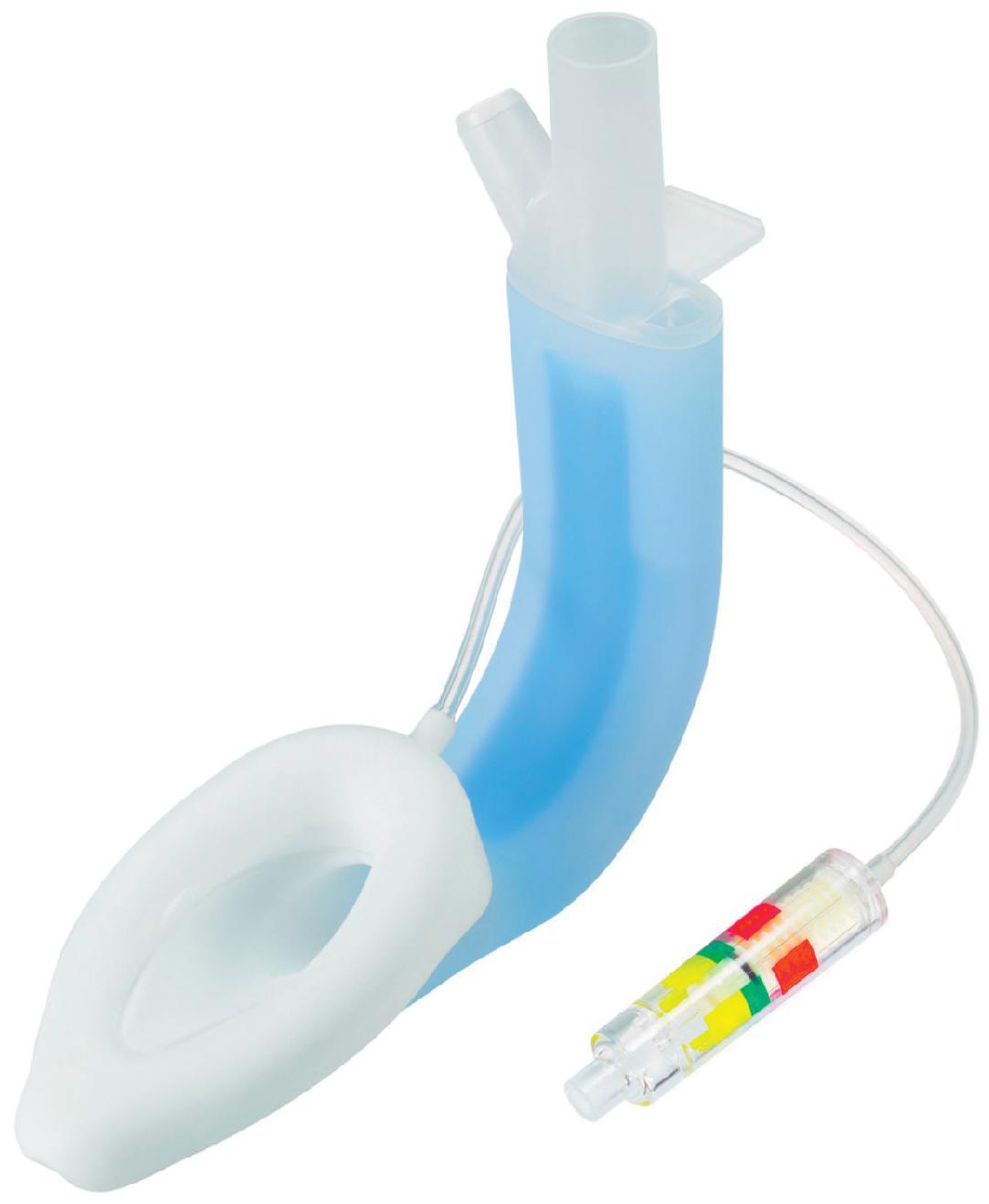
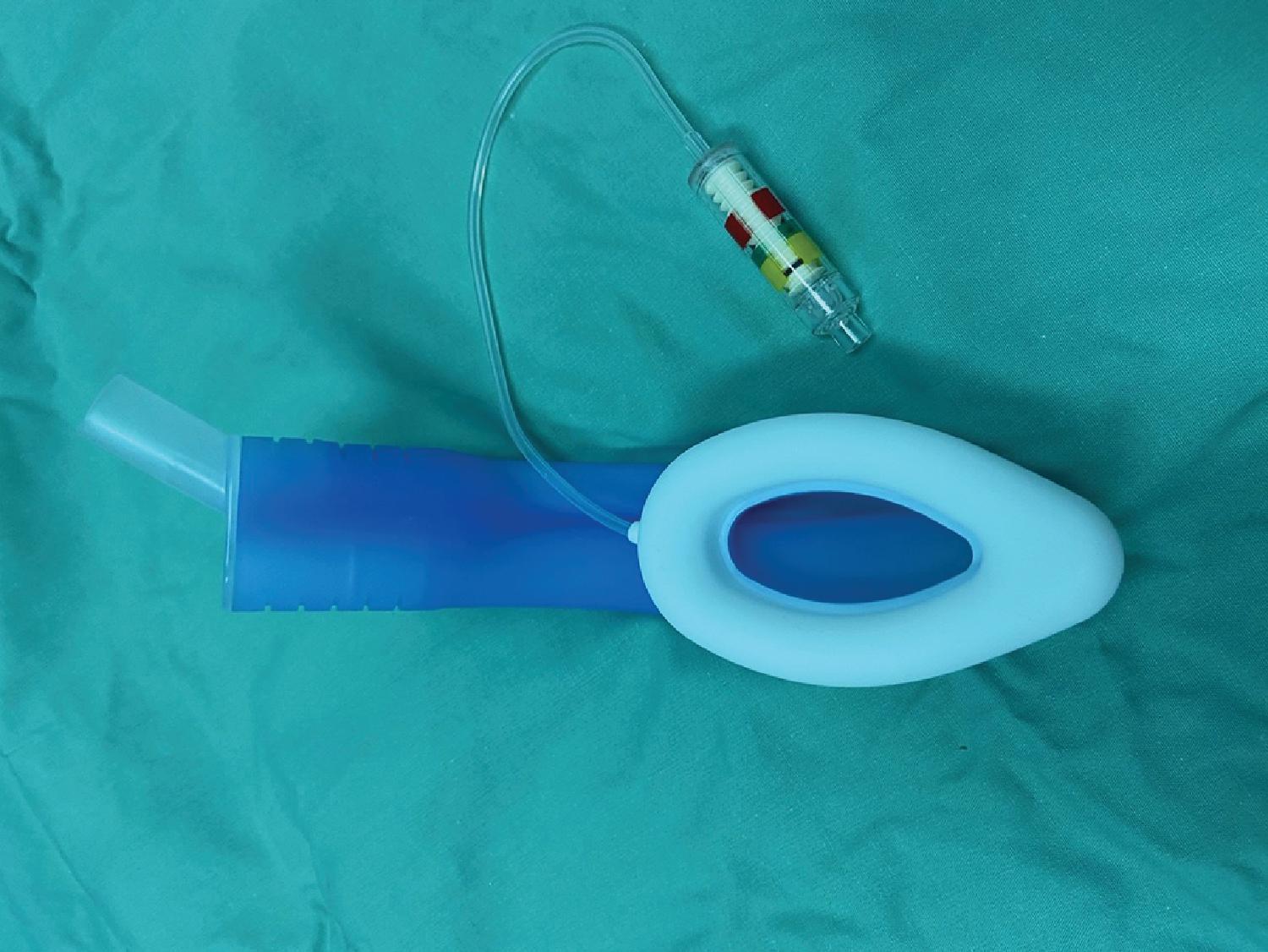
The history of SGAs is one of significant and constant development, from Brain’s basic design of the cLMA in the early 1980s to his release of multiple subsequent variants. Each variant on the cLMA was specifically designed to better serve the range of potential roles that Brain envisioned for the LMA devices, as outlined in this chapter’s introduction. Concurrent with the development of LMA-type SGAs is an ever-increasing evidence base for their safe use, paralleled by an increasing range of uses, some now widely accepted and some still controversial.
However, despite improvements and the increasing versatility of SGAs, not all design features for a specific purpose are synergistic with one another, meaning no single device can incorporate all roles. For instance, the use of more rigid materials in the tube component of the ILMA and SLMA is intended to improve the ease of insertion, but this also reduces the flexibility required for a device to be useful in head, neck, and shared airway procedures. Similarly, aperture epiglottic bars in the distal orifice of the mask component of the cLMA reduce the risk of epiglottic obstruction but impair instrumental access to the trachea.
For the various indications for use, there are important design and performance characteristics that must be fulfilled and understood to support optimal device selection and use.
In the development of the cLMA, Brain recognized the importance of studying, understanding, and accounting for the anatomic and physiologic principles of the oropharyngolaryngeal complex. The overall size and shape of the tube and mask components vary significantly among SGAs, especially when considering the non-LMA–type SGAs. Not only does this determine the most basic function of how the device passes through the mouth and into its final position, but it ultimately affects almost all functions of the device, as highlighted in the description of individual devices later in this chapter. With the evolution of second-generation devices, such as the PLMA and SLMA, additional features such as a drain tube, bite block, and fixation tab were developed. , Within these basic design frameworks, the manufacturing process and materials used can vary.
Differentiation of reusable and single-use devices is also an important design feature. The original SGAs were mostly made of silicone and could be reused in the range of 40 to 60 times after manual cleaning and sterilization. , Current manufacturer’s instructions recommend up to 40 uses.
Although there has been no evidence to prove SGAs are a source of infection, theoretical concerns in the late 1990s about the risk of infectious transmission through the tonsillar bed, particularly small viruslike particles and prion diseases, provided manufacturers with an opportunity to focus on the development of single-use designs. These were mostly made with polyvinylchloride (PVC), and many have been adopted into practice without evidence of clinical efficacy, safety, or equivalent performance compared with reusable devices. Brimacombe and colleagues described the rush toward single-use LMs as “driven by fears of the unknown and scientific misinformation,” the risks of infection, and financial costs needing to be balanced against the potential risks of using alternative untested equipment.
The fundamental purpose of an SGA is to provide a patent airway in the unconscious patient, thus interlinking with multiple safety and efficacy considerations. A minimally effective device will incorporate the following features:
Easy insertion with a high rate of first-time success;
A low rate of complications of insertion;
Maintenance of a patent airway;
The ability to ventilate the lungs reliably during controlled and spontaneous ventilation;
Access to the airway;
Reliable and simple fixation with a low rate of displacement during use;
Good tolerance during emergence to light planes of anesthesia;
Simple removal without causing upper airway trauma; and
Steep learning curve. ( Table 19.2 )
| Latex free |
| Easy insertion |
| High rate of first-time insertion attempt |
| Steep learning curve and high retention of skills |
| Low rate of complications of insertion |
| High airway sealing pressure to enable mechanical ventilation |
| Airway access |
| Good esophageal seal and drain tube to reduce risk of aspiration |
| Conduit for tracheal intubation |
| Simple removal |
| Good tolerance during emergence from anesthesia |
| Minimal upper airway trauma |
Insertion Success
A high rate of first-attempt insertion success is an important attribute of any airway device in terms of limiting the risk of upper airway trauma and even more so for rescue indications (see “ Rescue Indications ”) when the time taken to secure the airway is of critical importance. Depending on the clinical environment, qualifying the level of expertise required to achieve this success rate may also be important. The quality of insertion and removal, as determined by the degree of stimulation caused and the depth of anesthesia required, may be relevant to maintaining hemodynamic stability and limiting the risk of coughing and straining. In general, SGA devices have a significant benefit over ETTs at induction and during emergence, as they require lighter levels of anesthesia and are associated with less movement, coughing, breath-holding, laryngospasm, and hypoxia, both during insertion and during removal.
Desirable features and essential safety features for advanced use go beyond these requirements and vary according to the clinical setting. These are discussed in “ Advanced Indications .”
Maintaining a Patent Airway and Enabling Ventilation
The primary factors that determine whether an SGA can be used effectively for controlled ventilation are a patent airway and an adequate oropharyngeal seal. For LMAs, this seal is formed when the cuff surrounds the larynx, contacting with the mucosa of the inferior and lateral hypopharynx and the base of the tongue as it projects from the hyoid bone. The important determinants and requirements for this seal are further discussed in “ Advanced Indications .” However, consider that appropriate use of an SGA for controlled ventilation also depends on the seal formed in the hypopharynx and esophagus, reducing the risk of gastric inflation, and/or the presence of a correctly positioned, patent drain tube for decompression, as discussed further under “ Safety Features .”
Access to the Airway
There are two key considerations for airway access. First, the ability to access the glottis and trachea determines the utility of the device for assessment and intubation purposes. The diameter, length, and shape of the airway tube and distal orifice components determine whether an FIS and ETT can be passed. For most LMAs, the glottis is visible via the airway tube in approximately 90% to 95% of cases. Although cuff design and alignment of the orifice with the glottis may impact the success of blind and guided intubation techniques, of more importance is the angle at which the airway tube joins the mask portion of the LMA. For all LMAs except the ILMA, the angle is acute and an ETT passed blindly through the LMA will generally pass posterior to the glottis into the esophagus. In contrast, the angle is less acute in the ILMA, and the distal portion of the ILMA airway tube incorporates a ramp that both centralizes the ETT as it leaves the airway tube and increases forward angulation. For many LMAs, blind intubation has success rates around 15% making it both impractical and not recommended as a routine or rescue technique. The ILMA is the exception, with a first-pass success rate of around 75%. In North America, LMA-type and non-LMA-type SGAs are more frequently used as a conduit to tracheal intubation than in most other countries. It is perhaps for this reason that the LMA Classic Excel, which is based on the cLMA design with a removable proximal circuit connector and an epiglottic elevating bar that allows for FIS-assisted intubation, was specifically developed for the North American market.
Second, the clinical usefulness of an SGA for head, neck, and shared airway cases depends on the profile, position, flexibility, and stability of the device once positioned and secured. The provision of a reinforced (flexible) tube in the fLMA provides the greatest versatility for this purpose, with a reduced risk of kinking or dislodgement, with movement of the tube proximally not being transmitted distally. The PLMA also has a flexible tube, but the bulk of its two-tube design and the bite block make it impractical for most intraoral surgery.
In terms of safety considerations, the most pertinent risks with any SGA, including LMA-type SGAs, are aspiration of gastric contents; trauma to the airway; failure of ventilation through airway obstruction or leak; and inability to access the airway, especially if the airway displaces during surgery. The latter two of these have been discussed earlier.
Aspiration Protection
Early in the introduction of the cLMA to clinical practice, concerns were raised about the risk of aspiration as a result of the device stimulating the vomiting reflex and reducing upper esophageal tone. Extensive clinical experience has now clarified that aspiration risk with SGAs is low when patients are correctly selected and the device is correctly placed. Although this high safety margin has contributed to the expanding use of SGAs, the requirements for safe use must be carefully heeded.
Recent developments in SGA design have focused on incorporating features that reduce the risk of aspiration and extend the safe boundaries of their use. The drain tube in second-generation SGAs provides additional protection through several mechanisms: It reduces gastric inflation by venting gas that leaks into the upper esophagus; it provides a reliable conduit for insertion of a gastric tube and drainage of air and fluid; it vents regurgitant matter, directing it beyond the oral cavity, thereby bypassing the larynx; and it provides an early alert to the anesthesiologist of the occurrence of regurgitation because of the presence of gastric contents visible in the drain tube.
In the case of the PLMA, there are several other potentially protective aspects to the design: The higher airway seal reduces the likelihood of leak from the airway, even if airway pressures are high or positive end-expiratory pressure (PEEP) is used; the bulky mask tip creates a high seal with the upper esophagus, meaning that leakage of fluid around the mask tip is less likely; and the larger bulk of the mask and its high airway seal mean that even if regurgitant matter does reach the oral cavity, the risk of aspiration is low. The LMA protector has added safety features including a pharyngeal chamber and dual gastric drainage channels, designed to channel gastric content away from the airway.
Importantly, the efficacy of all of these design features is only realized if the device is correctly positioned and an adequate hypopharyngeal seal is formed. , , The hypopharyngeal leak pressure (HLP) is not measurable in individual patients. Cadaver studies have been used to provide indicative values for various SGA designs (see Table 19.3 ). The value of using these measurements as surrogates to predict the risk of aspiration when using a particular SGA is uncertain. Not only is there uncertainty about the lower threshold required to prevent expulsion of regurgitated gastric contents, but also the upper threshold to prevent the risk of esophageal rupture in the context of active vomiting. Bench-top and cadaver studies have confirmed the high sealing pressure of the PLMA and its ability to protect the larynx from aspiration, even in the face of high rates of “modeled” regurgitation. ,
| Supraglottic Airway | Esophageal Leak Pressure (cm H 2 O) |
|---|---|
| LMA Classic™ | ≈ 40 |
| Intubating LMA™ | ≈ 110 |
| LMA ProSeal™ | ≈ 60–70 |
| LMA Supreme TM | ≈ 60–70 |
| i-gel™ | ≈ 15–20 |
| LTS II | ≈ 40 |
In terms of clinical outcome literature, the incidence of aspiration with cLMA use is low, between 1:4000 and 1:12,000 for elective surgery, and up to 1:1000 for emergency surgery. , , This compares with reported rates of aspiration for the ETT of 1:4000 in elective and 1:900 for emergencies. In an observational study of more than 65,000 patients, cLMA use with mechanical ventilation was not associated with an increased risk of aspiration compared with ETT use, although confounding is likely. When comparing different SGA devices with each other, there is no robust clinical evidence to suggest one is superior to another in terms of aspiration protection, but also insufficient evidence to state that differences do not exist. Large case series have served to highlight common themes associated with aspiration and SGA use, including obesity, use of first-generation devices, use during the maintenance phase with light anesthesia, or controlled ventilation with a poorly positioned device. ,
Although aspiration is uncommon, it is still a highly significant issue, according to the Fourth National Audit Project (NAP4) of the Royal College of Anaesthetists and the DAS, highlighting these three points:
Aspiration is the most important safety consideration when using an SGA, with 50% of SGA complications related to aspiration.
Serious morbidity including mortality can result when it does occur, aspiration being the most common cause of death in patients who suffered serious airway complications during anesthesia.
Of the 17 significant cases of life-threatening aspiration with SGA use (out of the approximately 2 million cases analyzed), most were considered avoidable. The root cause of most cases was poor judgment of both the risk of aspiration and the choice of device to manage the identified risk.
Atraumatic Insertion
Any foreign body or airway device that comes into contact with airway structures has the potential to cause injury and complications. Minor and temporary pharyngeal morbidity related to SGA use most commonly relates to sore throat, dysphonia, and dysphagia, all of which occur less frequently than with ETT use. , Although a primary mucosal injury may or may not be significant in itself, the potential for secondary complications including bleeding, laryngospasm, and edema is also important.
More serious complications involving vascular and nervous structures are reported, but rare and largely related to compressive injuries as a result of incorrect and prolonged SGA use. When the SGA is not inserted deeply enough or the tube rests on the lateral side of the tongue, blood vessels of the tongue can be compressed and result in tongue engorgement and cyanosis. Compression of the lingual, recurrent laryngeal, or hypoglossal nerve can result in transient or prolonged nerve palsy, with cases of vocal cord paralysis also reported in the literature. , Other serious but extremely rare injuries reported in the literature include arytenoid dislocation and pharyngeal rupture with subsequent pneumomediastinum or mediastinitis.
The etiology of these complications during SGA use is still poorly understood. Correct insertion techniques and positioning of the device have theoretical value, particularly in preventing compression injury. Animal studies indicate the potential for trauma with prolonged use, as discussed further in “ Advanced Indications .” Intracuff pressure has been shown to affect the incidence of sore throat and pharyngolaryngeal morbidity and may also contribute to compression injury (see “ Important Considerations for Safe Use During Maintenance and Emergence ”). Ensuring that the SGA is correctly positioned and maintaining the cuff pressure at no higher than 60 cm H 2 O are prudent steps to minimize the risk of such complications.
Initially, Brain proposed that “the LMA may have a valuable role to play in all types of inhalational anesthesia” and in some cases of difficult intubation, such that it “may contribute to the safety of general anesthesia.” Colin Alexander, chairman of one of the first anesthesiology departments to adopt use of the LMA in the UK, concluded that the device “should be considered whenever the indication for tracheal intubation does not include protection of the airway from gastric contents.” Such was the impact of the cLMA in the UK that the cLMA had been ordered in all UK hospitals within a year of the first publication describing its use. For release 3 years later in the United States, the US Food and Drug Administration (FDA) added the stricture that “the LMA is not a replacement for the ETT.” Subsequent adoption in North America was considerably slower and more circumspect than in the UK. Contrast this with modern anesthetic practice where over 50% of all general anesthetics are managed with an SGA in some counties, and the various advanced indications that have been adopted and continue to be proposed in the literature. This history of initial adoption highlights an important issue in current practice. For the individual clinician, unfamiliarity with a device or technique is a major consideration in determining whether a practice is unsafe in his or her hands. However, this assessment is not necessarily relevant to the practice of individuals who are familiar with a device or technique, or in determining what novel practices should be researched further.
Routine Use
Early indications for the cLMA when it was a novel device were appropriately cautious. The standard use of the cLMA, as originally designed, was for an anesthetized, American Society of Anesthesiologists (ASA) physical status classification I or II patient, considered low risk for aspiration, with a normal body mass index (BMI), having elective, short, low-risk peripheral surgery. Such caution is also appropriate for the novice user, but these factors relate as much to the skill, experience, and safety of the user as to the inherent utility of the device. SGAs have particular use in the OR for peripheral and ambulatory procedures associated with a low risk of aspiration, as is common in orthopedic, plastics, breast, and urologic surgery. It is also appropriate to use an SGA (particularly a fLMA) in many otolaryngology and maxillofacial procedures.
Suitability of SGA use is not necessarily limited to the OR, especially in pediatrics when the need for cooperation and immobility requires an anesthetic. An SGA can be particularly advantageous when use of a face mask is difficult, inadequate, or not possible or repeated invasive airway management exposes the patient to an increased risk of tracheal ulcerations. Suitable minor pediatric procedures include, but are not limited to, radiologic imaging, cardiology interventions, lumbar puncture or intrathecal therapy, bone marrow aspirations, vascular access procedures, and minor biopsies. Use during transesophageal echocardiography (TEE) ( Fig. 19.8 ) is also described in adults.
Controlled Ventilation
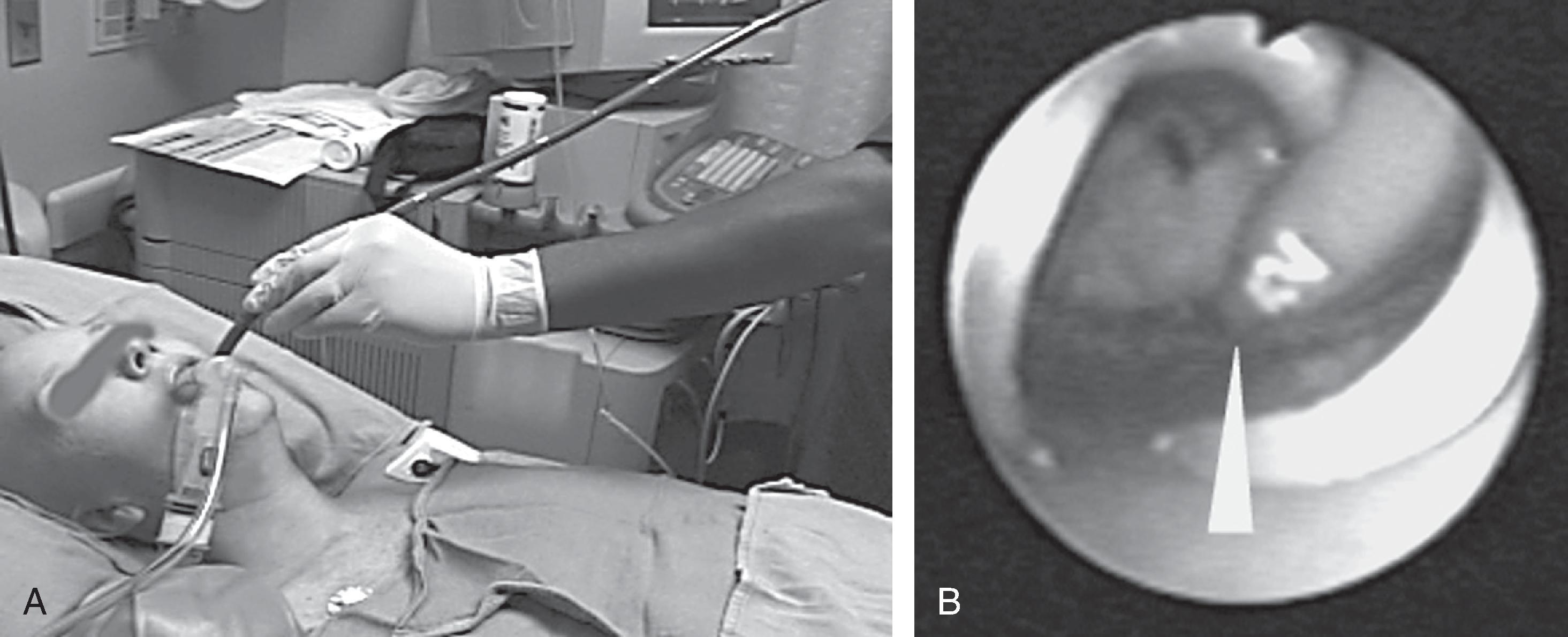
The ability to use SGAs for spontaneous ventilation or PPV was described in Brain’s first paper on the cLMA. However, in the first independent trial of the cLMA, concerns about the reliability of applying PPV were raised, in the context of having only a size 3 prototype for a sample of predominantly medium- to large-build British men. Multiple studies involving thousands of adult and pediatric patients have long shown that a cLMA can be used for PPV with efficacy. Such is the clinical experience of controlled ventilation with all types of LMA that it should now be considered mainstream practice.
The efficacy of an SGA during PPV is largely dependent on close approximation of the device orifice with the larynx and the presence of an adequate oropharyngeal seal. Given the fact that the seal is created by forces acting between the cuff and surrounding mucosa, it is dependent on multiple factors. Correctly positioning the right-size device and inflation to an appropriate cuff pressure are critical to achieving the best possible seal for a particular device in a particular patient. However, safety depends on correct positioning, avoidance of hypoventilation from leakage, avoidance of gastric inflation, and prevention of regurgitation and aspiration.
As with all LMA practice, careful patient and device selection is the key to safe practice. Controlled ventilation with an SGA can be more difficult or even dangerous in patients with increased BMI, noncompliant lungs, abnormal airways, a full stomach, or gastroesophageal reflux disease. The degree of oropharyngeal seal required for effective and safe use will depend on numerous factors, including device positioning, the patient’s lung compliance, and ventilatory requirements, as discussed further in Performance Testing. Among LMAs, the cLMA has the lowest oropharyngeal seal (median 18–20 cm H 2 O, see Table 19.3 ) , and in a significant proportion of cases this is inadequate to prevent a clinically significant airway leak. As peak airway pressure rises, an increasing proportion of the leaking gas enters the stomach. In all but the lowest-risk cases, there is an argument for using an LMA with the best oropharyngeal seal, and in most cases a second-generation device likely adds safety. The shape and area of the SLMA cuff provides a better anatomic fit in the pharynx than does the cLMA, whereas the superior silicone-based PLMA cuff with its dorsal component permits for an even higher airway seal. , With the highest oropharyngeal seal, the PLMA and LMA Protector have the best performance characteristics for controlled ventilation.
A patient’s physiognomy in terms of the volume and elasticity of their oropharyngeal anatomy also impacts how the SGA interfaces with the airway. Early work published by Brain on the PLMA highlights this fact, noting an increasing oropharyngeal seal with increasing BMI in a small study of 20 female patients with a BMI of 20 to 35 kg/m 2 . Unpublished work by the authors of this chapter found similar findings in obese patients, as well as a reduced oropharyngeal seal in elderly patients. Similarly, by virtue of affecting airway tone, the administration of neuromuscular blocking agents potentially alters the airway seal and may increase the degree of leak in a small proportion of patients (by 10% in approximately 10% of patients with a PLMA).
Use of a pressure-controlled or pressure-support mode of ventilation is preferable because it reduces peak airway pressure compared with volume-controlled ventilation. PEEP may be applied but is unlikely to be tolerated if there is an inadequate oropharyngeal seal, and may create or worsen airway leak. In contrast, with the optimal oropharyngeal seal of the PLMA, the ability to use PEEP may improve ventilatory performance, particularly in the obese.
Overall, SGAs can be safely used for controlled ventilation in appropriately selected patients and surgical situations, when the correct device is used correctly.
Become a Clinical Tree membership for Full access and enjoy Unlimited articles
If you are a member. Log in here